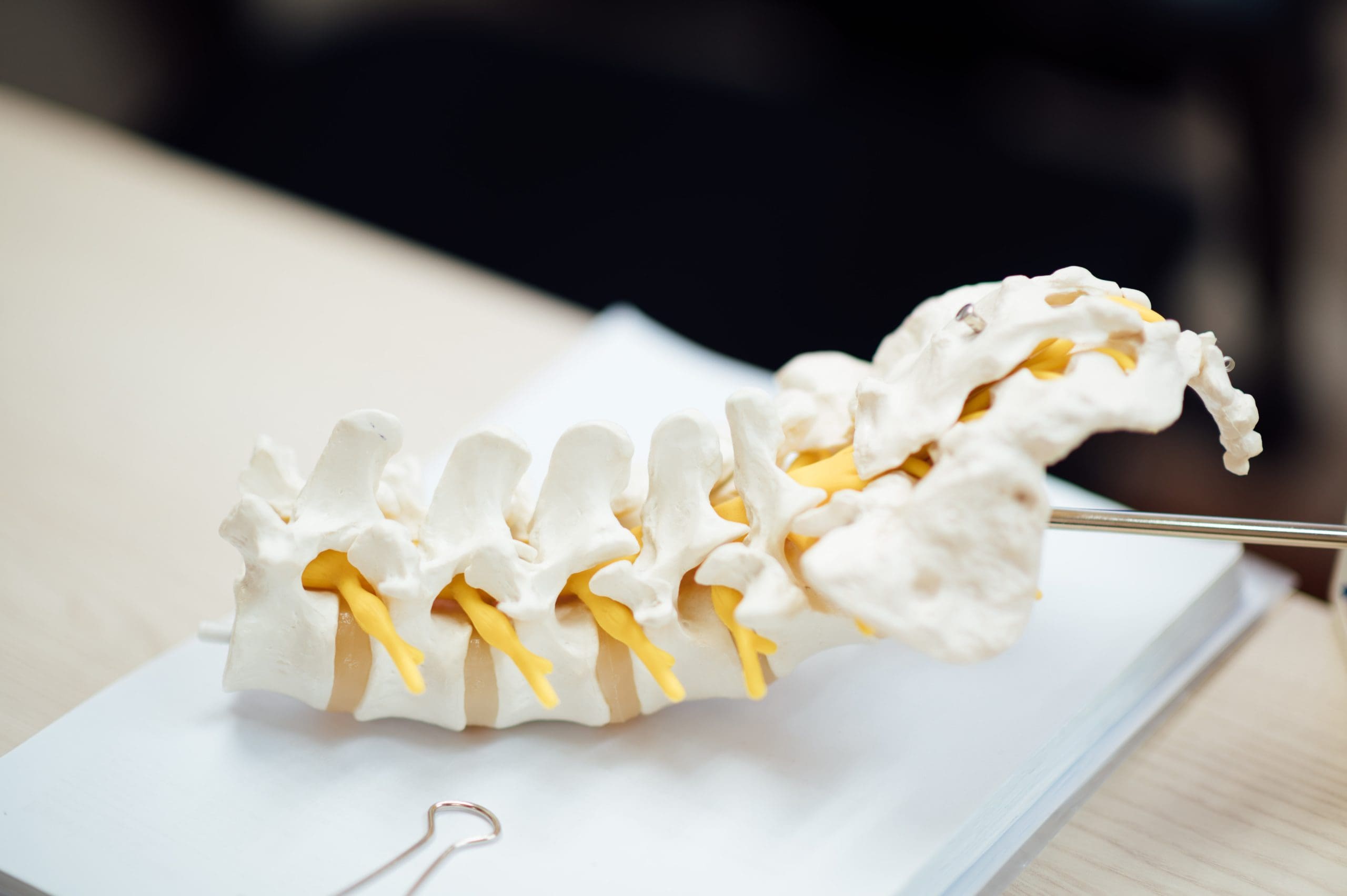Claire Hearn, age 82, is transferred to your neuroscience unit immediately after a complicated six-level laminectomy and posterolateral fusion involving T12–S1 to treat degenerative spinal stenosis. The postanesthesia care unit nurse reports that the surgery lasted 4 hours and caused an estimated blood loss of 1,500 mL; the patient’s intraoperative hemoglobin value was below 8.7 g/dL.
History and assessment hints
When assessing Mrs. Hearn, you ask about her preoperative strength and sensation to establish a baseline for comparison. She says her legs had been getting progressively weaker over the past year but she was still able to walk without assistive devices. You note that she can lift both legs off the bed, and her strength with dorsiflexion and plantar flexion is 4/5 bilaterally; she says this weakness is usual for her. Sensation to her lower extremities is intact, her dorsalis pedis and posterior tibial pulses are 2+, and capillary refill is brisk bilaterally. The large dressing over her lumbar spine is dry and intact, with sanguineous fluid in the Jackson-Pratt drain and clear yellow urine in the indwelling urinary catheter. Mrs. Hearn’s vital signs are normal. She reports an “aching” incisional back pain of 3 on a 0-to-10 scale, relieved by morphine delivered with a patient-controlled anesthesia (PCA) pump.
When you return to Mrs. Hearn’s room 30 minutes later, she says her incisional pain is now at 5. After checking her PCA settings, you advise her to press the PCA button more often. But 20 minutes later, you find her crying in pain, with her PCA pump “locked out.” She reports “throbbing” incisional pain, which she rates at 7. Her dressing remains dry and intact, with sanguineous drainage slowly and continuously filling the drain. Reassessing her strength, you find markedly weaker dorsiflexion on the left side, with decreased sensation to her left lower extremity; also, she can’t differentiate between sharp and dull sensations. On the right side, her strength is unchanged, so you don’t think her report is limited by pain. Instead, you suspect she’s experiencing pressure on the spinal cord or spinal nerve roots.
On the scene
You’re aware that spinal cord compression can result from a tumor, an epidural abscess, or a hematoma. You focus on hematoma after correlating Mrs. Hearn’s symptoms (incisional pain not relieved by analgesics, plus new onset of motor and sensory deficits) with her operation. Knowing she needs a quick diagnosis and surgery to avoid permanent neurologic deficits, you place a STAT call to Mrs. Hearn’s neurosurgeon and stay with her to perform frequent neurologic, wound, drain, and vital sign checks. Expecting her to return to surgery, you withhold food and fluids.
Minutes later, the neurosurgeon returns your call. You report the change in Mrs. Hearn’s assessment findings and recommend that he evaluate her right away. He orders a STAT computed tomography scan of the thoracic and lumbar spine. The scan shows an epidural hematoma that’s starting to press on the terminal portion of the spinal cord and nerve roots. The patient is immediately taken to surgery to evacuate the hematoma.
Outcome
Postoperatively, Mrs. Hearn’s lower extremity function returns to baseline. She’s discharged to the rehabilitation unit 3 days later to prepare her for her eventual return home.
Education and follow-up
Compression of the spinal cord or its nerve roots is an emergency that must be recognized and addressed immediately to prevent severe neurologic deficits, including paraplegia and bowel and bladder dysfunction (which can become irreversible within hours). Mrs. Hearn had several risk factors for postoperative hematoma—surgery on five or more spinal levels, age over 60, and more than 1,000-mL blood loss. Her risk was especially high because her blood was Rh-positive and her intraoperative hemoglobin was less than 10 g/dL. Fortunately, your astute assessment and rapid intervention helped her avoid permanent disability.
Susan Tocco is a Neuroscience Clinical Nurse Specialist at Orlando Regional Medical Center in Orlando, Florida.


















